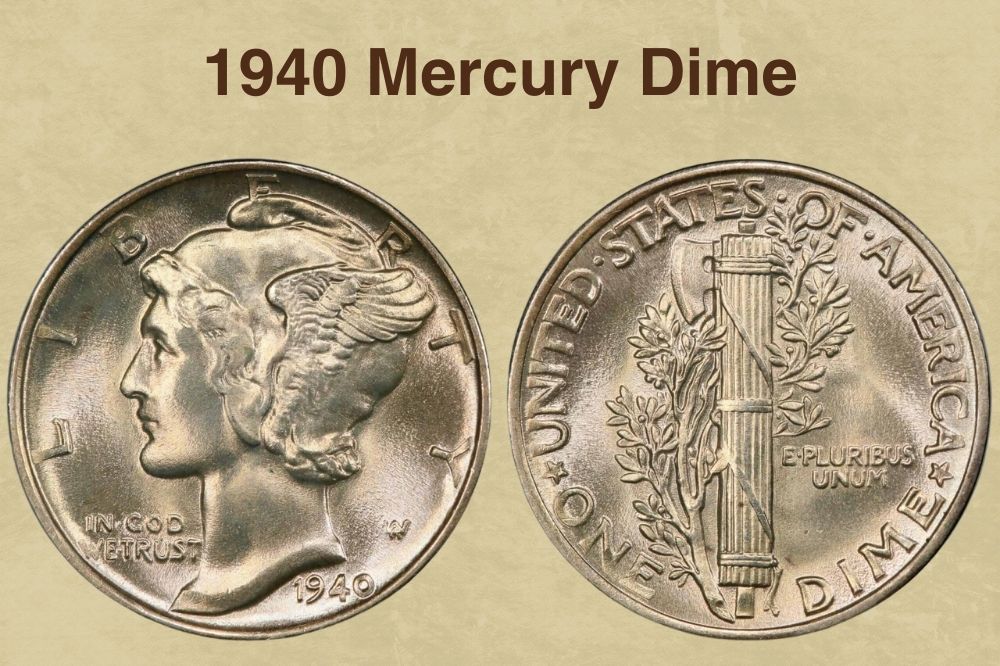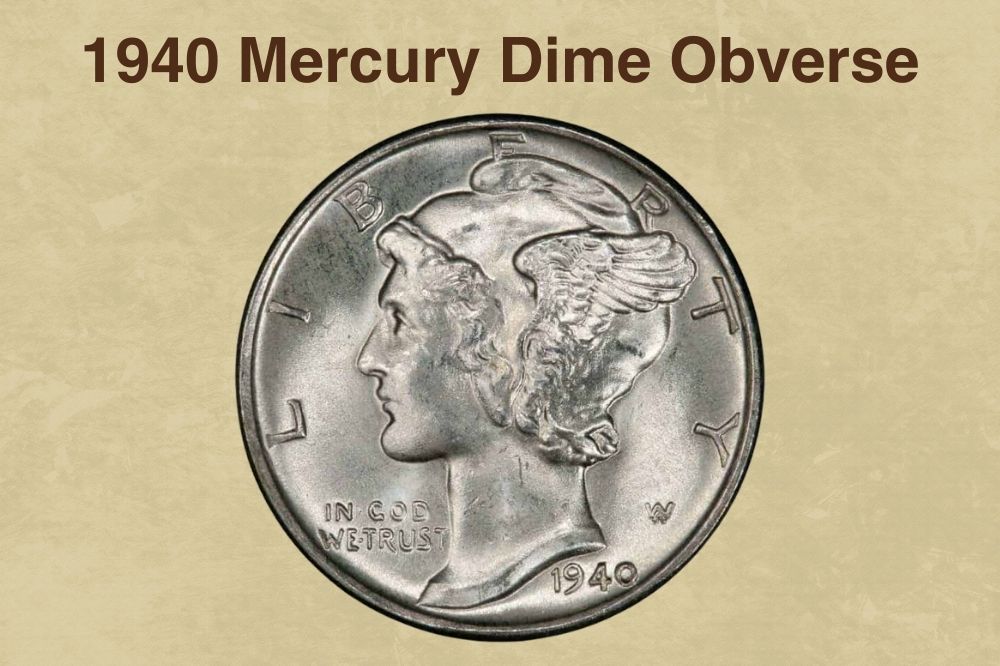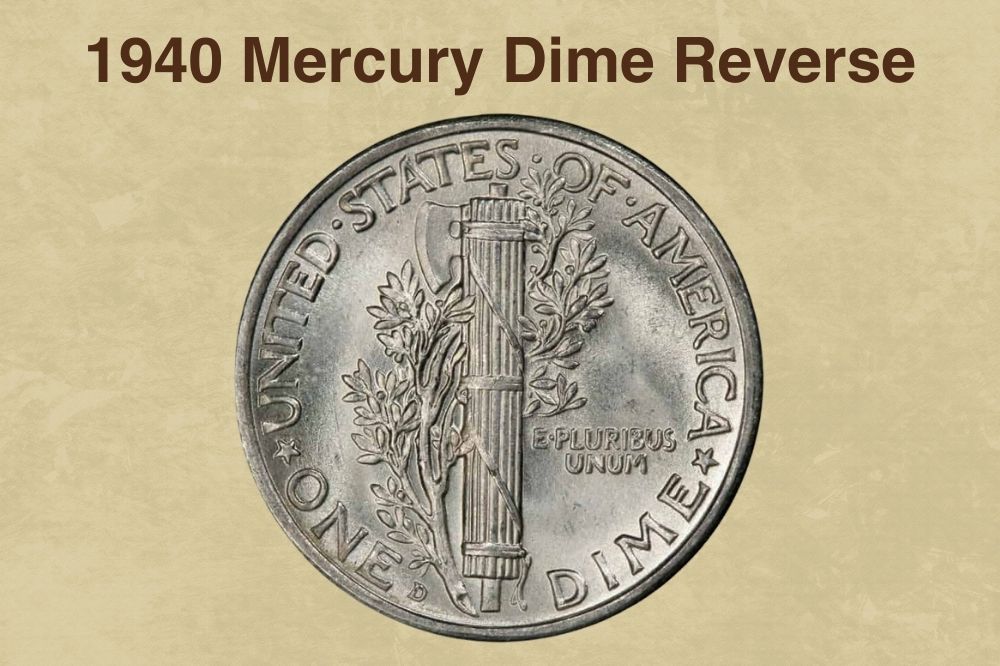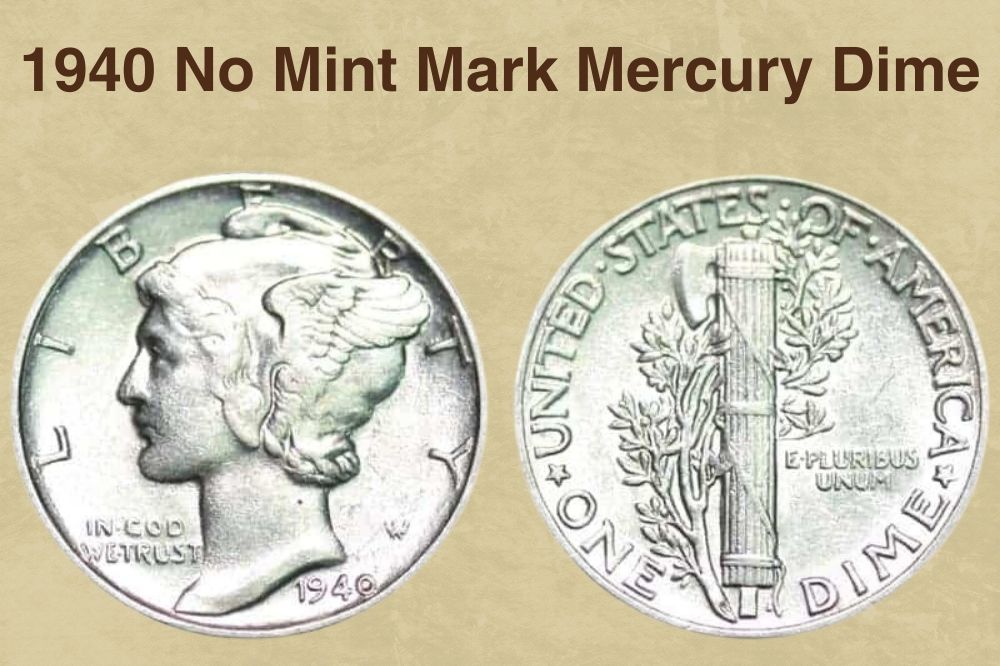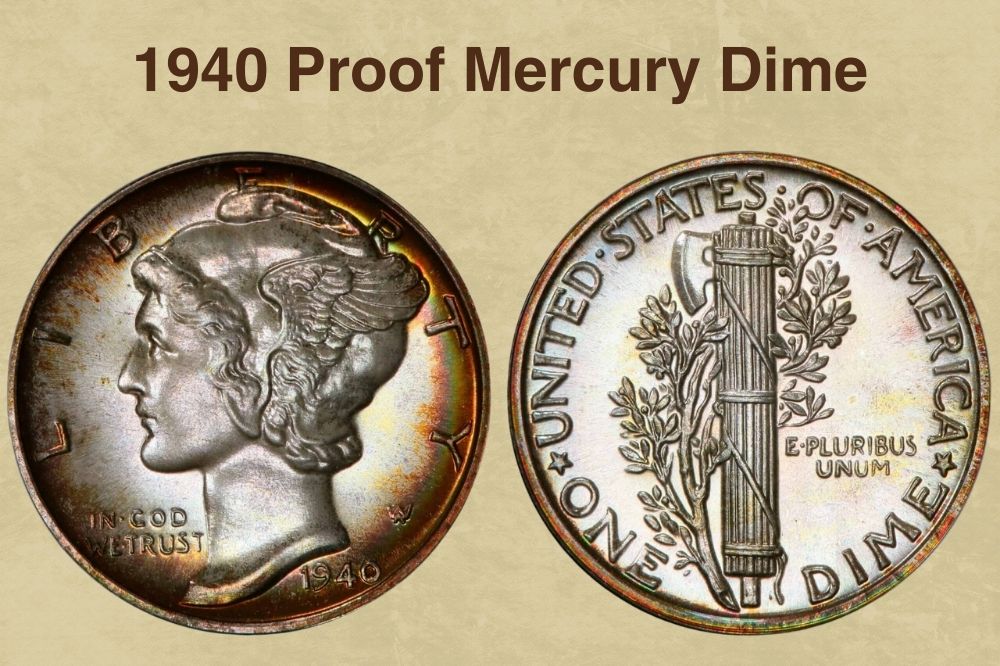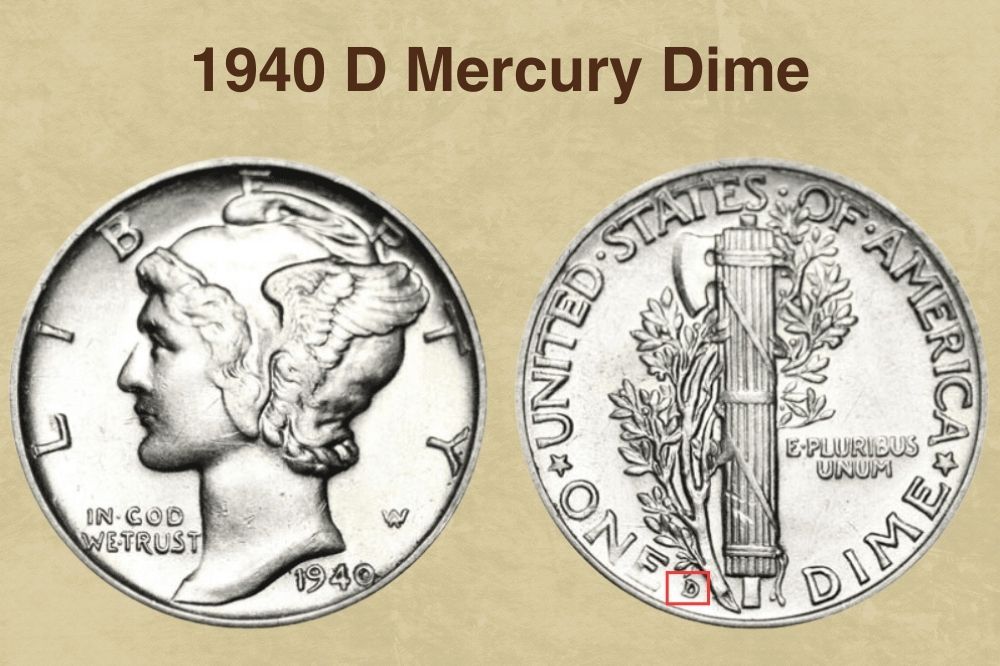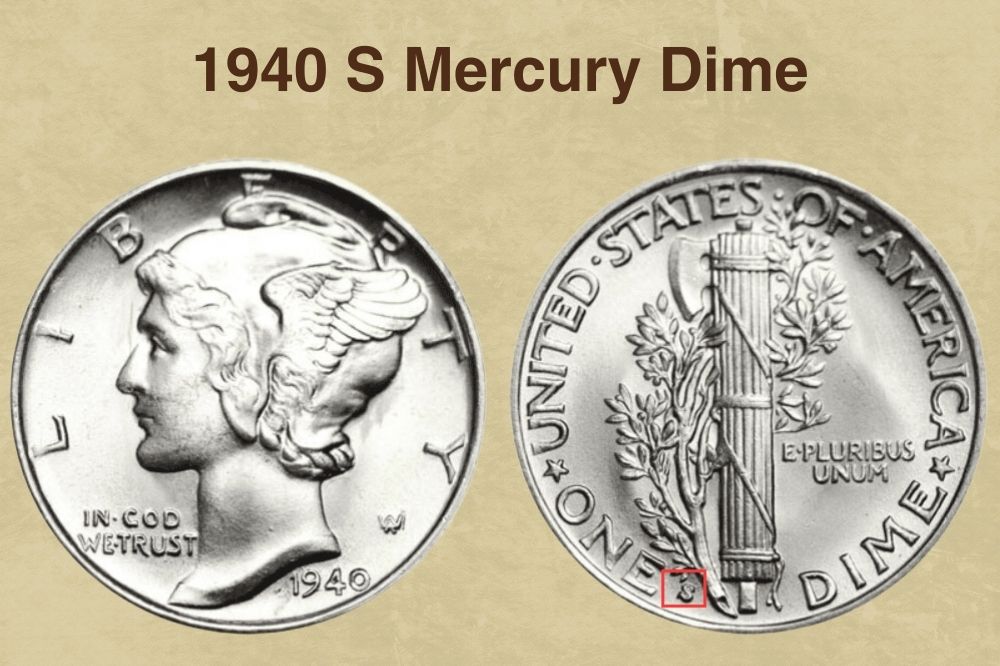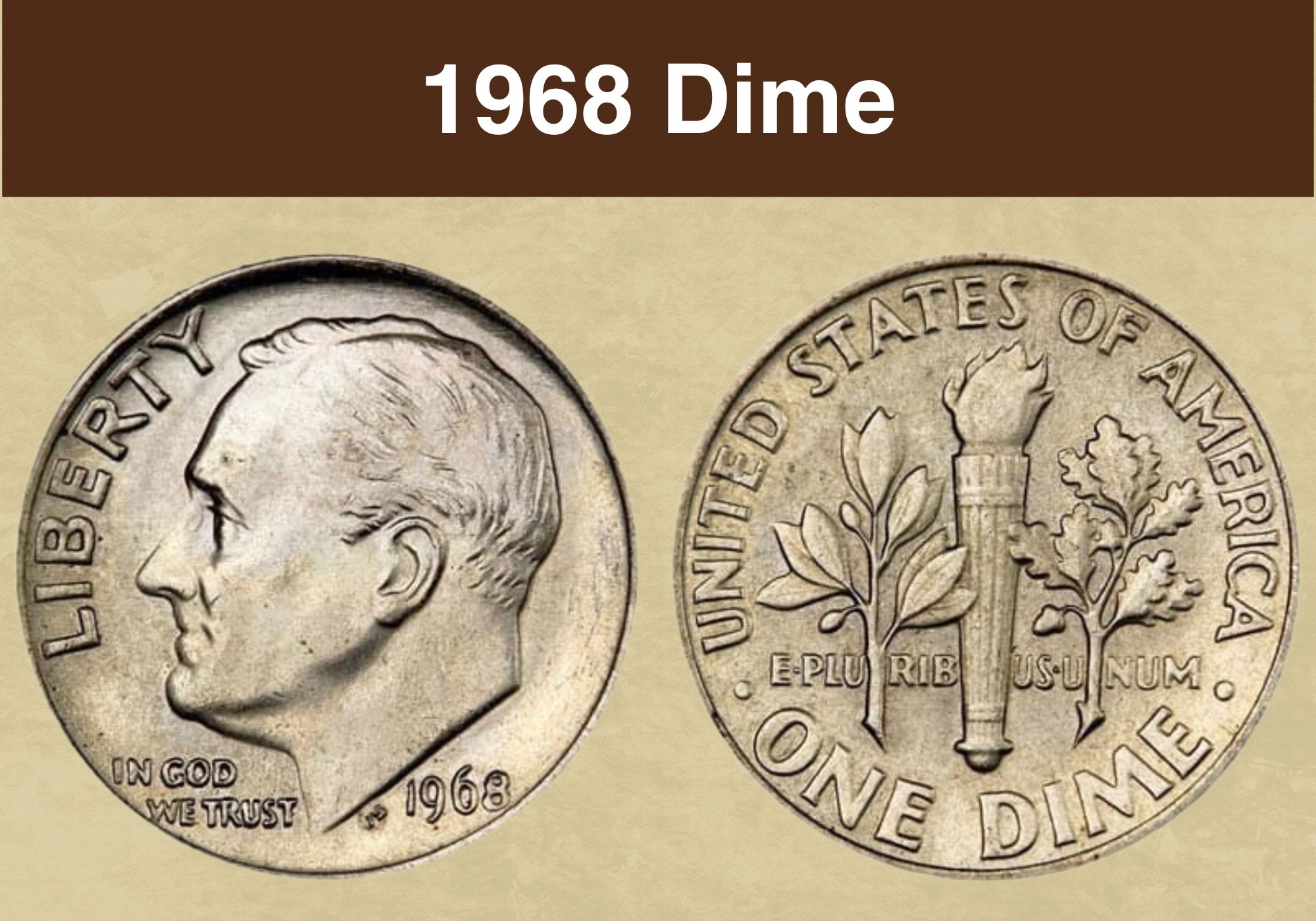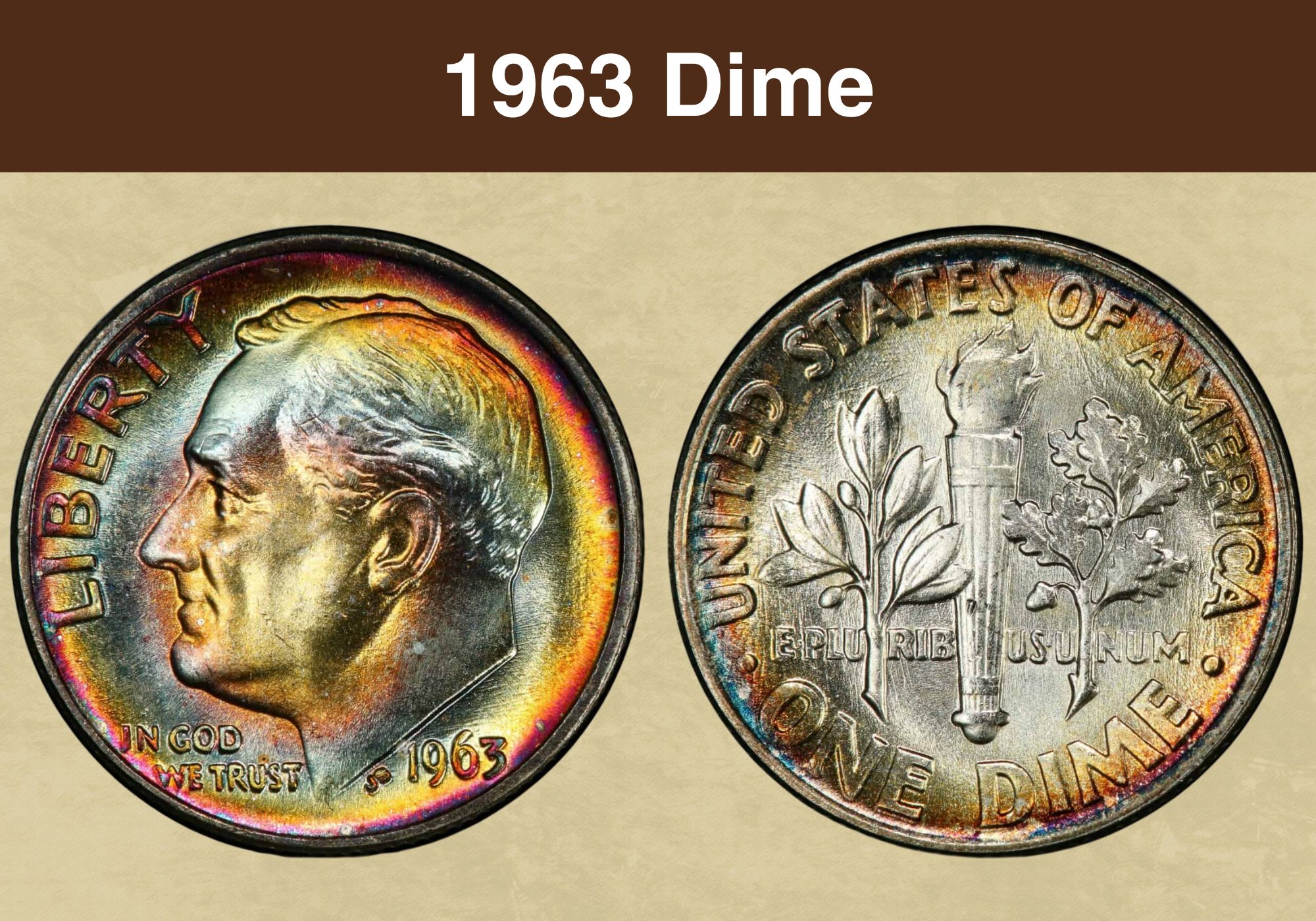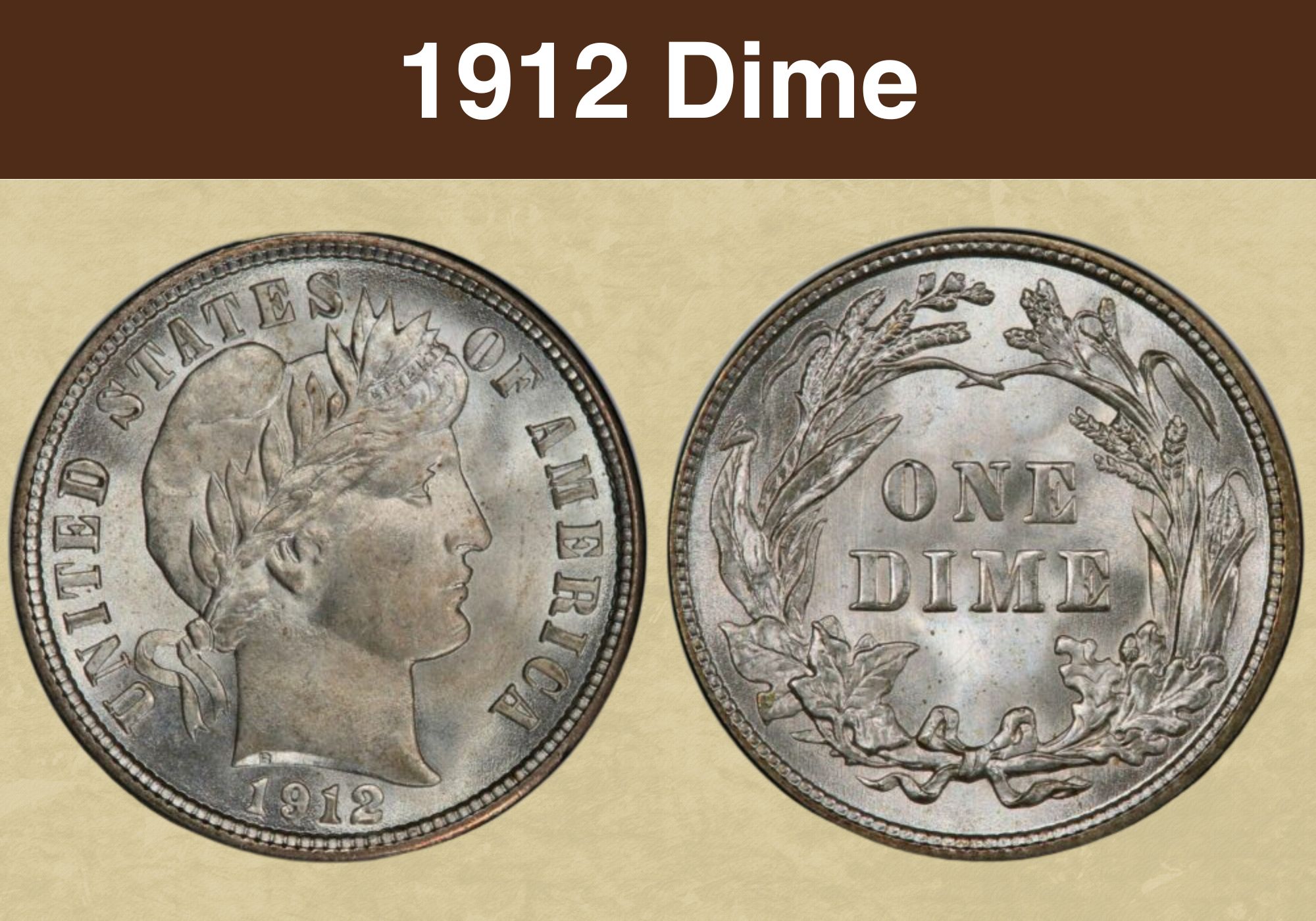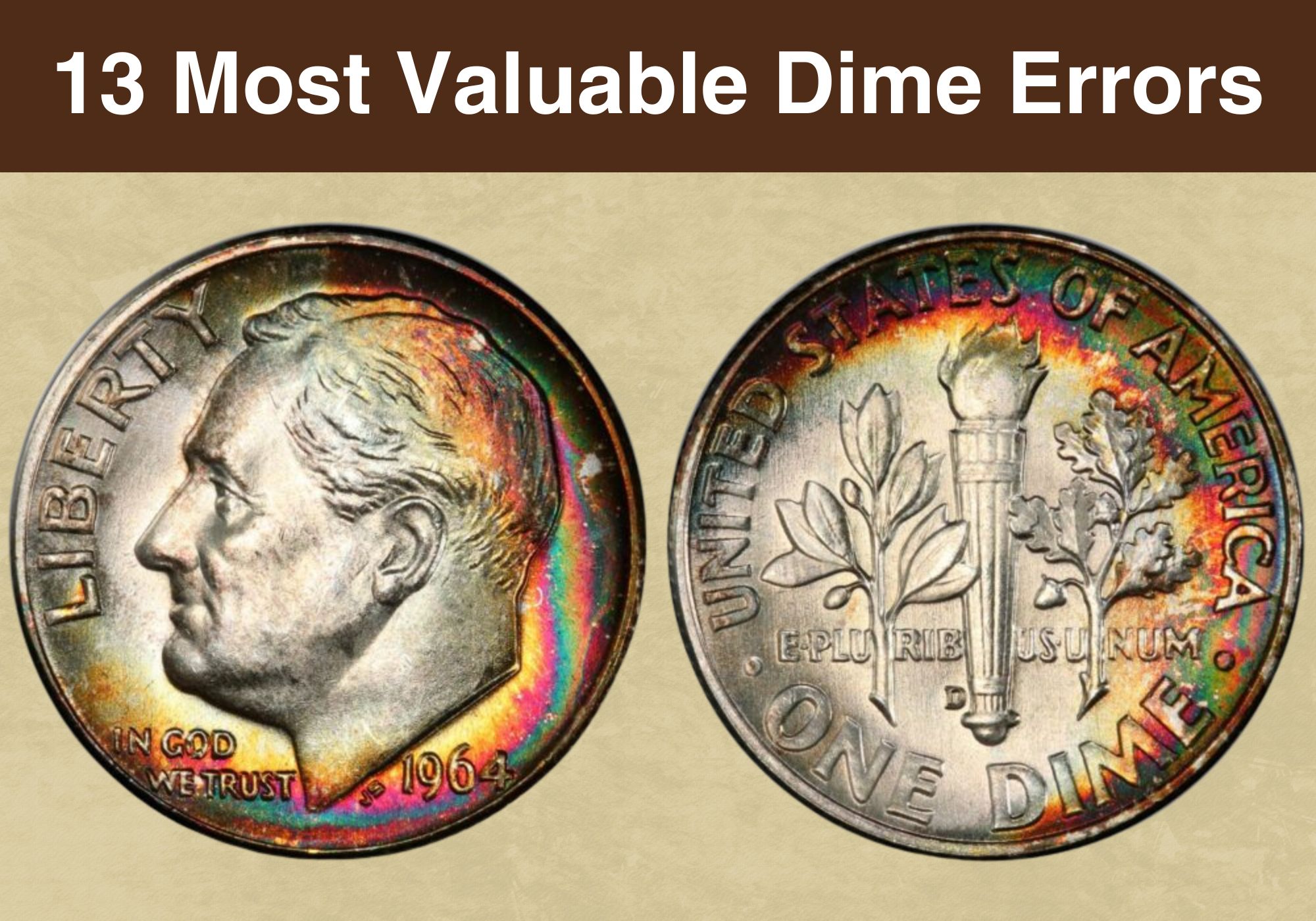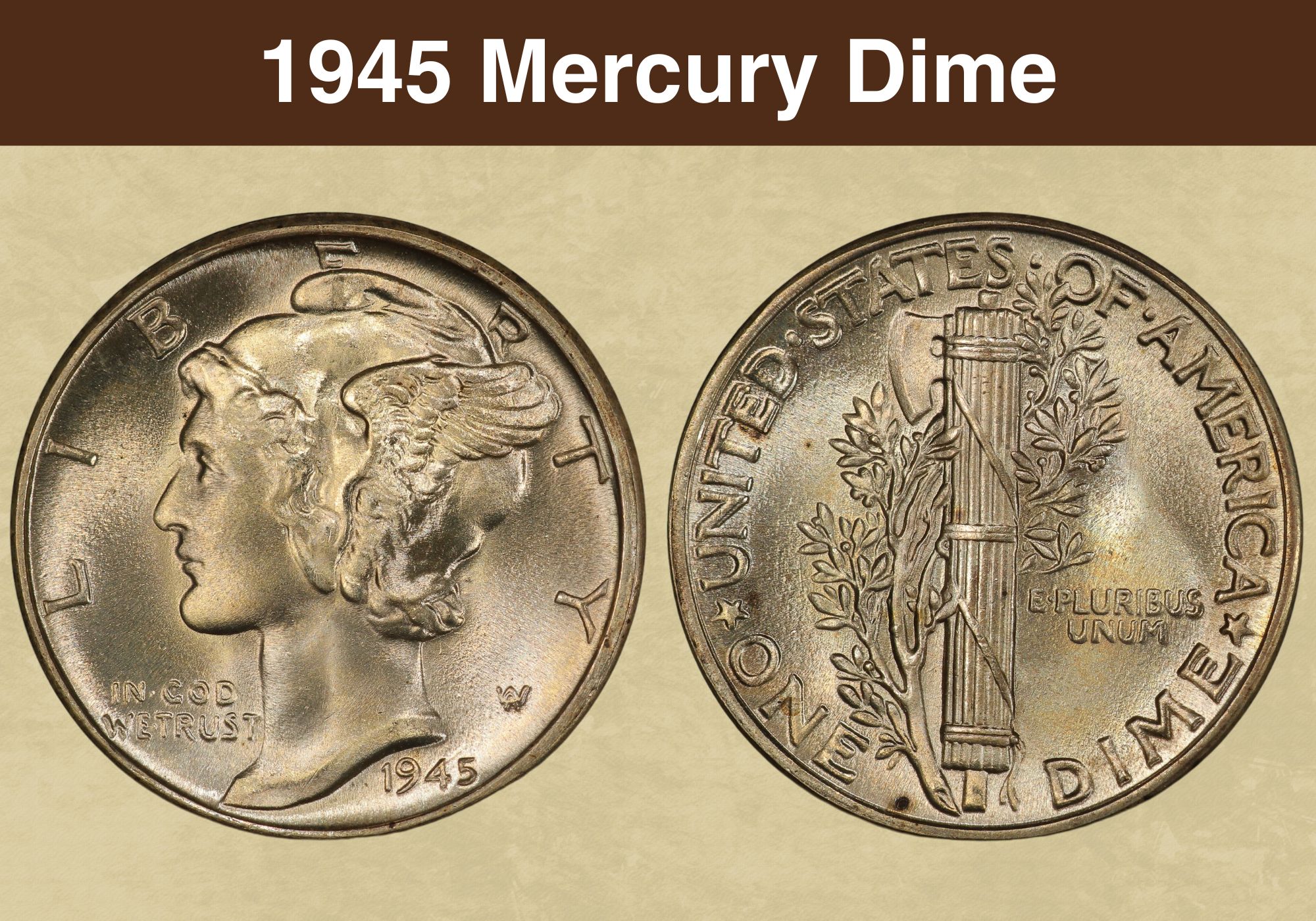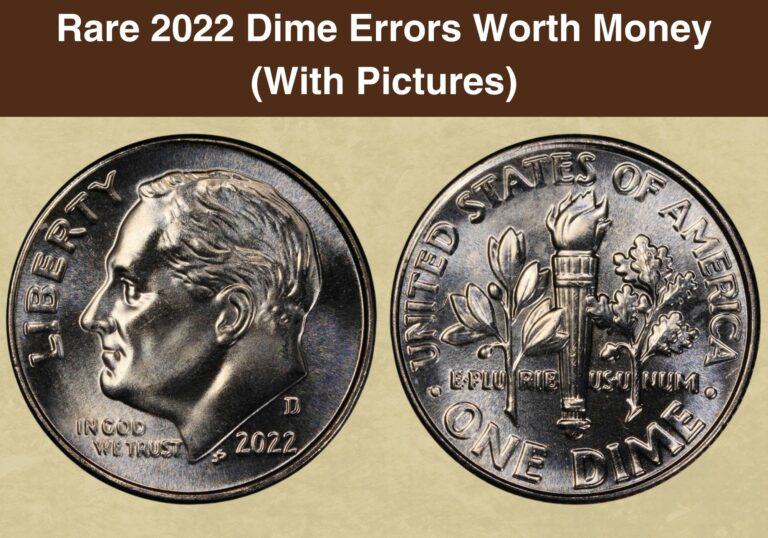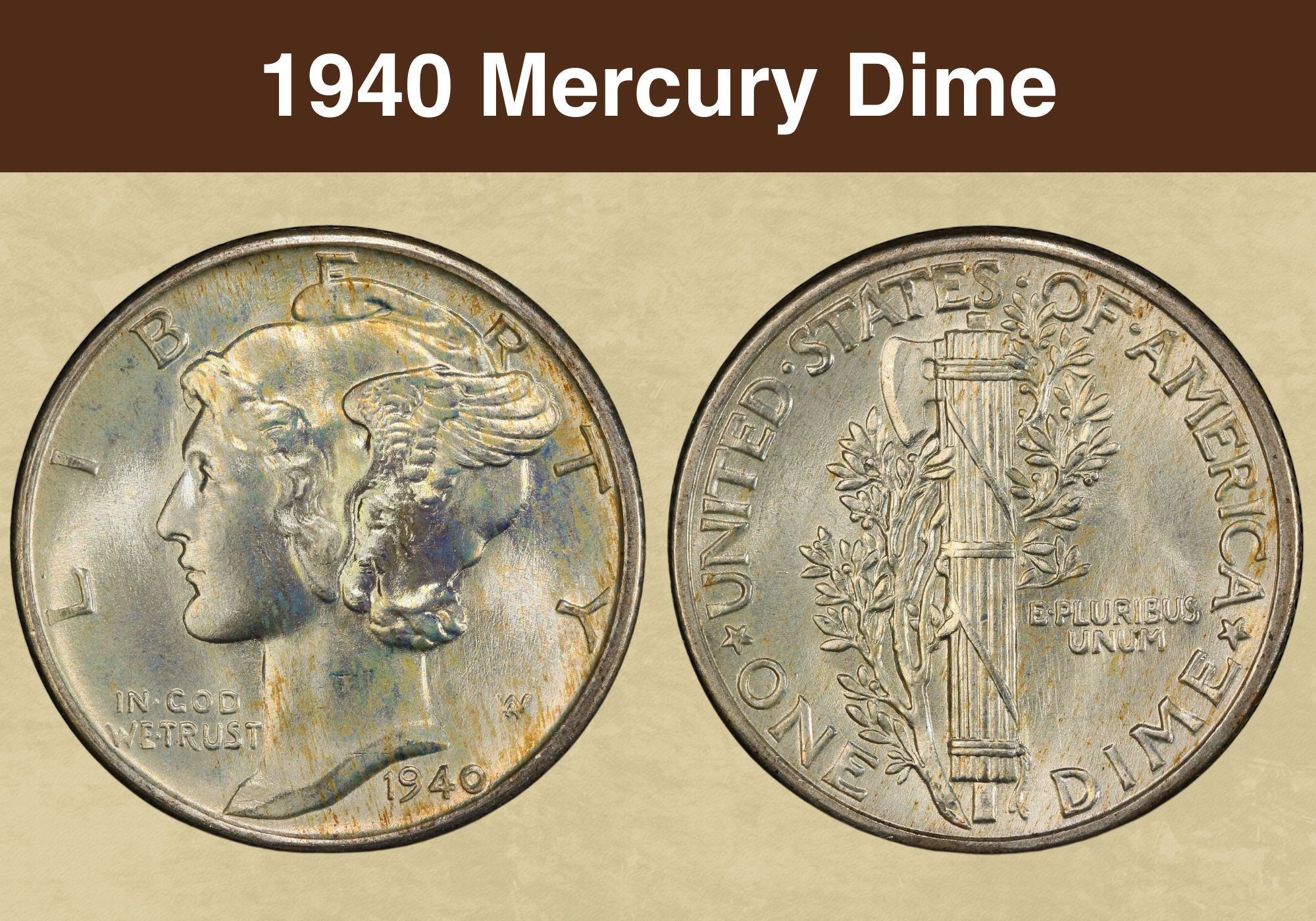
Coin Value Contents Table
- 1940 Mercury dime value
- History of the 1940 Mercury Dime
- 1940 Mercury dime Types
- Features of the 1940 Mercury Dime
- 1940 Mercury Dime Grading
- 1940 Mercury Dime Value Guides
- 1940 No Mint Mark Mercury dime value
- 1940 proof Mercury dime value
- 1940 D Mercury dime value
- 1940 S Mercury dime value
- Rare 1940 Mercury Dime Error List
- Where to Sell Your 1940 Dime ?
- FAQ about the 1940 Mercury Dime Value
Sculptor Adolph Weinman created Winged Liberty Head dime in 1916, one of the most popular American coins ever. The series ended in 1945 when the Roosevelt dimes appeared.
Since these coins are made of silver, you can expect they are worth something, regardless of their look and condition. However, the 1940 dime value increases with higher preservation levels, particularly for pieces with Full Bands.
1940 Mercury dime value |
|||
| Condition | 1940 No mint mark dime | 1940 D dime | 1940 S dime |
| Good | $2.97 | $2.97 | $2.97 |
| Very good | $3.53 | $3.53 | $3.53 |
| Fine | $4.05 | $4.05 | $4.05 |
| Very fine | $4.30 | $4.30 | $4.30 |
| Extra fine | $4.58 | $4.58 | $4.58 |
| AU | $5.55 | $5.55 | $5.55 |
| MS 60 | $8.99 | $8.99 | $10.27 |
| MS 65 | $36 | $41 | $41 |
| PR 65 | $211 | / | / |
History of the 1940 Mercury Dime
After 25 years, Barber dimes went to history, and it was time for a new coin type. Since the first Mercury dimes were released on October 30, 1916, the US Mint minted Barber dimes by that date. Therefore, you can find two different coins with the same date.
Three designers gave their best to create the aesthetically best possible design for the new ten-cent coin with Lady Liberty on the obverse.
Adolph A. Weinman’s creativity outperformed the competition. So, Hermon A. MacNeil and Albin Polasek had to admit that Augustus Saint-Gaudens’ student did an excellent job and that the better one won.
Rumors say that the designer made Liberty’s face based on Elsie Kachel Stevens’ portrait he made in 1913. Anyway, the new coin quickly became a symbol of American ideals, peace and liberty of thought.
The US Mint produced these coins for thirty years, from 1916 to 1945. The Roosevelt dimes appeared in the last war year as a tribute to Americans’ favorite war President, Franklin D. Roosevelt.
1940 Mercury dime Types |
||
| Location | Year | Minted |
| Philadelphia | 1940 No Mint mark dime | 65,350,000 |
| Philadelphia | 1940 proof dime | 11,827 |
| San Francisco | 1940 S dime | 21,560,000 |
| Denver | 1940 D dime | 21,198,000 |
| Total | / | 108,119,827 |
In 1940, three mints produced almost 110 million silver Mercury dimes, including proofs minted in Philadelphia, before the US entered WWII. That was a valuable coin, and kids could purchase a double-dipped ice cream cone, two Coca-Cola bottles, or a 52-paged Comic Book for this money.
Nowadays, the Winged Liberty Head dime is highly collectible, and collectors often use affordable Dansco sets to assemble them. Another option is to create certified sets, but it is only for those with unlimited budgets. One such set of top-rated dimes can cost tens of thousands of dollars.
Also read: Top 17 Most Valuable Roosevelt Dimes Worth Money
Features of the 1940 Mercury Dime
Mercury dimes are actually the nickname of Winged Liberty Head dimes designed by sculptor Adolph Weinman. The series was minted in three mints from 1916 to 1945 when the Roosevelt dimes replaced them after WWII. They are still among the most popular American coins ever.
The obverse of the 1940 Mercury dime
Even though Adolph Weinman depicted Lady Liberty on the Winged Liberty Head dime obverse, it reminded Americans of the Roman god Mercury, hence the nickname. She wears a Phrygian cap with wings and is surrounded by the word LIBERTY from the top. There are also engraved:
- The minting year
- The inscription IN GOD WE TRUST
- Designer’s initials
The reverse of the 1940 Mercury dime
The reverse surface is occupied by fasces, a Roman wooden sticks’ bundle with an axe, representing power. The balance is provided by the symbol of peace, the olive branch. On the right side is the saying E PLURIBUS UNUM, while the UNITED·STATES·OF·AMERICA and denomination frame the central composition.
1940 Mercury dime Details |
|
| Shape | Round |
| Face value | Ten cents ($0.10) |
| Compound | 0.900 silver with 0.100 copper |
| Coin diameter | 0.705 inches (17.91 mm) |
| Silver weight | 0.072 troy ounces (2.24 g) |
| Coin weight | 0.080 troy ounces (2.5 g) |
| Coin thickness | 0.053 inches (1.35 mm) |
| Edge | Reeded |
Other features of the 1940 Mercury dime
The 1940 Mercury dimes are round silver coins with a face value of ten cents and a reeded edge with precisely 118 reeds. Their diameter is 0.705 inches (17.91 mm), and their thickness is 0.053 inches (1.35 mm). The silver weight of 0.072 troy ounces (2.24 g) makes up 90% of the total coin weight of 0.080 troy ounces (2.5 g).
1940 Mercury Dime Grading
The only way to get the right Mercury dime value is to grade it correctly. While uncirculated coins never have visible damage on the surfaces, those that spent more or less time in circulation show corresponding traces of wear and shine loss.
| # | Grade |
|---|---|
| 1 | Basal State-1 |
| 2 | Fair |
| 3 | Very Fair |
| 4, 5, 6 | Good |
| 7, 8, 10 | Very Good |
| 12, 15 | Fine |
| 20, 30 | Very Fine |
| 40 | Extremely Fine |
| 50 | About Uncirculated |
| 60 | Mint State |
| 65 | Mint State |
| 70 | Mint State |
Please check our grading guides to know your coin scale, It’s the necessary step to know the exact value of your coin.
Check out now: How to Grade Mercury Dime?
1940 Mercury Dime Value Guides
Three main mints produced 108,119,827 Mercury dimes in the first war year, including proof coins and three types from a regular strike. You can recognize them after existence or a lack of the mint mark on the reverse.
1940 No Mint Mark Mercury dime value
With 65,350,000 Mercury dimes minted in 1940, the mint in Philadelphia released the highest number of these coins. Circulated pieces are affordable, and you can find them for $2 to $7.50, depending on their appearance and quality.
Uncirculated coins are always a bit more expensive, and you can expect to pay more for such beautiful coins. Their price range depends on the grade and is approximate:
- $11 for dimes in MS 60 grade
- $12 for dimes in MS 61 grade
- $16 for dimes in MS 62 grade
- $22 for dimes in MS 63 grade
- $36 for dimes in MS 64 grade
- $44 for dimes in MS 65 grade
- $57 for dimes in MS 66 grade
- $110 for dimes in MS 67 grade
- $575 for dimes in MS 68 grade
The 1940 Full Bands Mercury dimes are more pricey, with differences based on the grade. So, you can expect to find pieces for $13 to $216. The most costly are rare specimens in MS 68 quality, with estimated prices from $2,800 to $3,750.
1940 proof Mercury dime value
The Philadelphia mint also produced 11,827 proof coins in 1940. The most common pieces cost $96 to $340, but those in the highest grades are much more expensive. For instance, you should pay $2,900 for specimens with the PR 68 ranking. Those in the PR 69 grade can reach $48,500 at auctions.
1940 D Mercury dime value
The mint in Denver produced 1940 D Mercury dimes with the mint mark D on the coin reverse. Most of the 21,198,000 struck pieces spent years in circulation, so you can expect them to be cheap, although they are over eight decades old.
The expected price range for these coins is from $2 to $10 on average. Only the most quality dimes with the D mint mark in MS 68 grade cost $1200. Lower ranked pieces are affordable, and you should count on the following:
- $12 for MS 61-graded dimes
- $16 for MS 62-graded dimes
- $22 for MS 63-graded dimes
- $36 for MS 64-graded dimes
- $44 for MS 65-graded dimes
- $57 for MS 66-graded dimes
- $110 for MS 67-graded dimes
As always, collectible specimens with Full Bands on the reverse are at least slightly more costly. Their prices vary depending on the quality and are:
- MS 61 dime – $20
- MS 62 dime – $26
- MS 63 dime – $33
- MS 64 dime – $44
- MS 65 dime – $62
- MS 66 dime – $100
- MS 67 dime – $250
- MS 68 dime – $1,450
1940 S Mercury dime value
The San Francisco mint released 21,560,000 Mercury dimes with the S mint mark in 1940. Their value nowadays is modest, particularly for those in the lowest grades. In most cases, you should set aside $2 to $7.50 for such coins, while those in the mint state are slightly more expensive.
You can purchase excellently looking specimens in an uncirculated condition for $10.27to $41, while the best-preserved ones are more valuable. The estimated price range for 1940 MS 68 Mercury dimes is from $650 to $780. Even the 1940 S MS FB dimes are often affordable, with prices ranging from:
- $12 for MS 61-graded dimes
- $16 for MS 62-graded dimes
- $22 for MS 63-graded dimes
- $36 for MS 64-graded dimes
- $44 for MS 65-graded dimes
- $57 for MS 66-graded dimes
- $210 for MS 67-graded dimes
Only pieces with MS 68 ranking reach an assessed value of $2,800 to $3,360.
Also read: Top 17 Most Valuable Mercury Dimes Worth Money
Rare 1940 Mercury Dime Error List
It is possible to find imperfections among 1940 dimes minted in all three mints. Their value is significantly higher than regular coins, depending on the error type.
Doubled die obverse
When the die struck a blank coin two or three times, you can see traces of additional strikes on its surface. For instance, a few 1940 S Mercury dimes with a DDO error are highly collectible and cost several dozen dollars.
Uncentered broad strike
Dimes are sometimes uncentered on the planchet, and a result of striking out of the collar is an uncentered coin design. Such pieces are collectible and always more expensive than those from the regular strike. For instance, one 1940 MS 62 Mercury dime was paid $90 in 2014 instead of its regular price of $8 to $11.
Re-punched mint mark
This error is common among 1940 dimes produced in Denver and San Francisco mints. Coins with the double-struck mint mark are often worth $150, while Full Bands pieces can reach $300.
Also read: 13 Most Valuable Dime Errors Worth Money
Where to Sell Your 1940 Dime ?
Now that you know the value of your coins, do you know where to sell those coins online easily? Don’t worry, I’ve compiled a list of these sites, including their introduction, pros, and cons.
Check out now: Best Places To Sell Coins Online (Pros & Cons)
FAQ about the 1940 Mercury Dime Value
What makes a 1940 Mercury dime rare?
The 1940 Mercury dimes are common coins, but those with Full Bands on the reverse are sometimes scarce, particularly those in the highest grades. For instance, MS 68 graded coins can cost a few thousand dollars. Besides, the best-preserved proofs struck this year are often expensive and can cost $15,000 to $22,000 at auctions.
Which are the most pricey 1940 Mercury dimes?
- The 1940 MS 68+ FB Mercury dime reached a price of $35,250 in 2019 at Legend Rare Coin Auctions
- The 1940 PR 69 Mercury dime reached a price of $15,295 in 2005 at Heritage Auctions
- The 1940 S MS 68 FB Mercury dime reached a price of $9,775 in 2000 at Heritage Auctions
- The 1940 S MS 68+ Mercury dime reached a price of $8,519 in 2023 at Legend Rare Coin Auctions
- The 1940 PR 67 CAM Mercury dime reached a price of $4,313 in 2006 at Heritage Auctions
- The 1940 D MS 68 Mercury dime reached a price of $1,093 in 2006 at Goldberg Auctioneers
- The 1940 D MS 68 FB Mercury dime reached a price of $3,565 in 2003 at Heritage Auctions
- The 1940 D MS 67 FB PL Mercury dime reached a price of $1in 2020 at Heritage Auctions
- The 1940 MS 68 Mercury dime reached a price of $800 in 2022 on eBay
- The 1940 S MS 65 DDO Mercury dime reached a price of $660 in 2021 at Heritage Auctions
- The 1940 S/S MS 66 FB RPM Mercury dime reached a price of $293 in 2021 on eBay
- The 1940 S/S MS 66 RPM Mercury dime reached a price of $161 in 2009 at Heritage Auctions
How much should you pay for the 1940 No Mint Mark Mercury dime?
Most 1940 Mercury dimes released from the Philadelphia mint spent years in circulation. Their average price is $2 to $7.50, while uncirculated pieces cost $7 to $408, depending on grade.
What are the most pricey Mercury dimes?
The most expensive Mercury dime ever is a coin with Full Bands graded MS 68+ produced in San Francisco in 1938. It was sold in 2019 for $364,250. Only two other dimes came close to this price, including:
- The 1931 S MS 67+ FB Mercury dime that was paid $270,250 the same year
- The 1916 S MS 67 Mercury dime that was paid for $207,000 at Heritage Auctions in 2010

